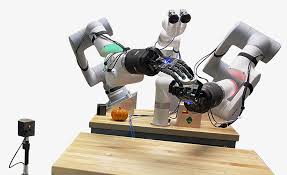A team of researchers in Israel is developing a robotic arm that employs a single, mobile motor capable of moving along a rail to control multiple joints. This design, known as the Minimally Actuated Serial Robot (MASR), combines the flexibility of snake-like robots with the low-cost benefits of continuum robots—but with one trade-off: speed.
Rethinking Traditional Robotic Manipulators
Conventional robotic arms consist of rigid links connected by individually actuated joints. While these systems can quickly cover large workspaces, they tend to be bulky, costly, and vulnerable to failure; a problem at one joint can seriously affect the overall performance. Alternatives like snake robots offer continuous actuators for increased flexibility but remain expensive, and continuum robots, which use compliant techniques (such as cables or pneumatics), sacrifice precision despite being lightweight and affordable.
The MASR Approach
The MASR design addresses these issues by using a series of passive links connected via joints that lock into place, combined with a rail running through each link. A single mobile actuator—equipped with one motor to travel along the rail and another to rotate the joint it reaches—serves to actuate any joint along the arm. While this means only one joint is controlled at a time, resulting in slower operation compared to traditional systems, it also offers unique advantages. The modular design makes it easy to adjust the arm’s length by adding or removing links, and if necessary, additional mobile actuators can be added for simultaneous joint control. This flexibility also simplifies repairs, as components can be easily swapped out.
Benefits and Limitations
Despite its versatility, the MASR is not designed for rapid or highly precise movements. For instance, when attempting to trace a straight path, the arm must continuously reconfigure itself, often resulting in a zigzag trajectory rather than a smooth line. Although incorporating extra mobile actuators could improve performance, this design is best suited for tasks where the final outcome is more critical than speed or precision.
Insights from the Research Team
On the Development of MASR:
The research team has long pursued minimalistic robotic designs to maximize the specific power of their systems by reducing the number of motors. They observed that in many serial robots, multiple motors are spread out and not used simultaneously. This led to the idea of relocating a single motor along the arm, a concept that diverges from biological systems where muscles remain fixed.
Advantages Over Continuum Robots:
Continuum robots offer an almost limitless range of movement due to their infinite degrees of freedom, but they typically lack rigidity and can be challenging to control precisely. In contrast, MASR’s discretized design—breaking the arm into many segments—provides rigidity under load. The mobile motor introduces novel movement capabilities, such as transporting tools for pick-and-place operations, navigating inside pipes, or even spraying along a path. Additionally, the separation of the links and the motor makes it straightforward to customize the arm’s configuration.
Potential for Space Applications:
The MASR’s lightweight and low-inertia design make it particularly promising for space missions, where reducing mass is crucial. Its low moment of inertia means that moving the arm has minimal effect on a satellite’s orientation. This robot could be used for satellite repair, docking, refueling, or debris removal, offering a flexible tool for handling the complexities of space operations.
Moving Toward Three-Dimensional Operation:
Currently designed for two-dimensional motion to simplify its construction and control, the team plans to extend MASR’s capabilities to three dimensions. One possibility is to add an actuated joint at the base to provide vertical movement, or to combine joints with orthogonal axes to achieve full 3D maneuverability.
Commercialization and Future Work:
Owing to its simplicity and ease of operation, the MASR has the potential to be adapted across various industries. The team is actively seeking collaborations with industry partners and is working on refining the robot’s design. Their future projects include developing a fully automated mobile motor system and optimizing motion-planning algorithms to reduce the time taken for repositioning the motor. They are even exploring applications of this concept in walking robots, where a motor could dynamically shift among legs.
This innovative design illustrates how rethinking actuation in robotics can yield systems that are not only adaptable and cost-effective but also uniquely suited to challenging applications where conventional robots might fall short.





